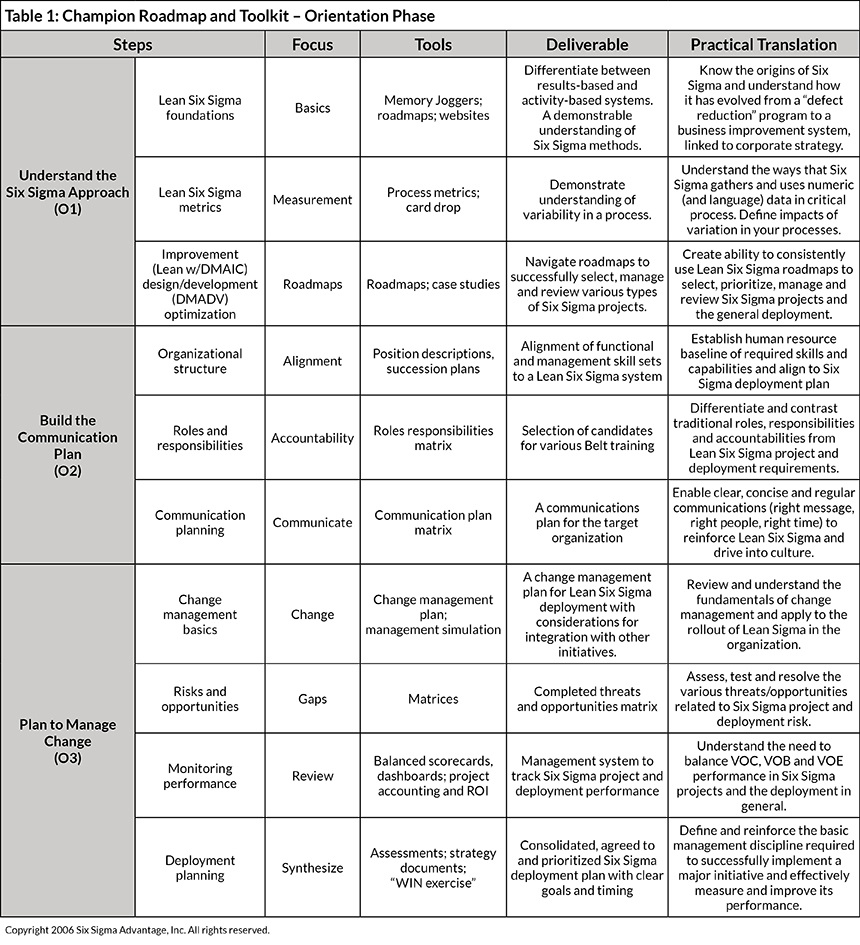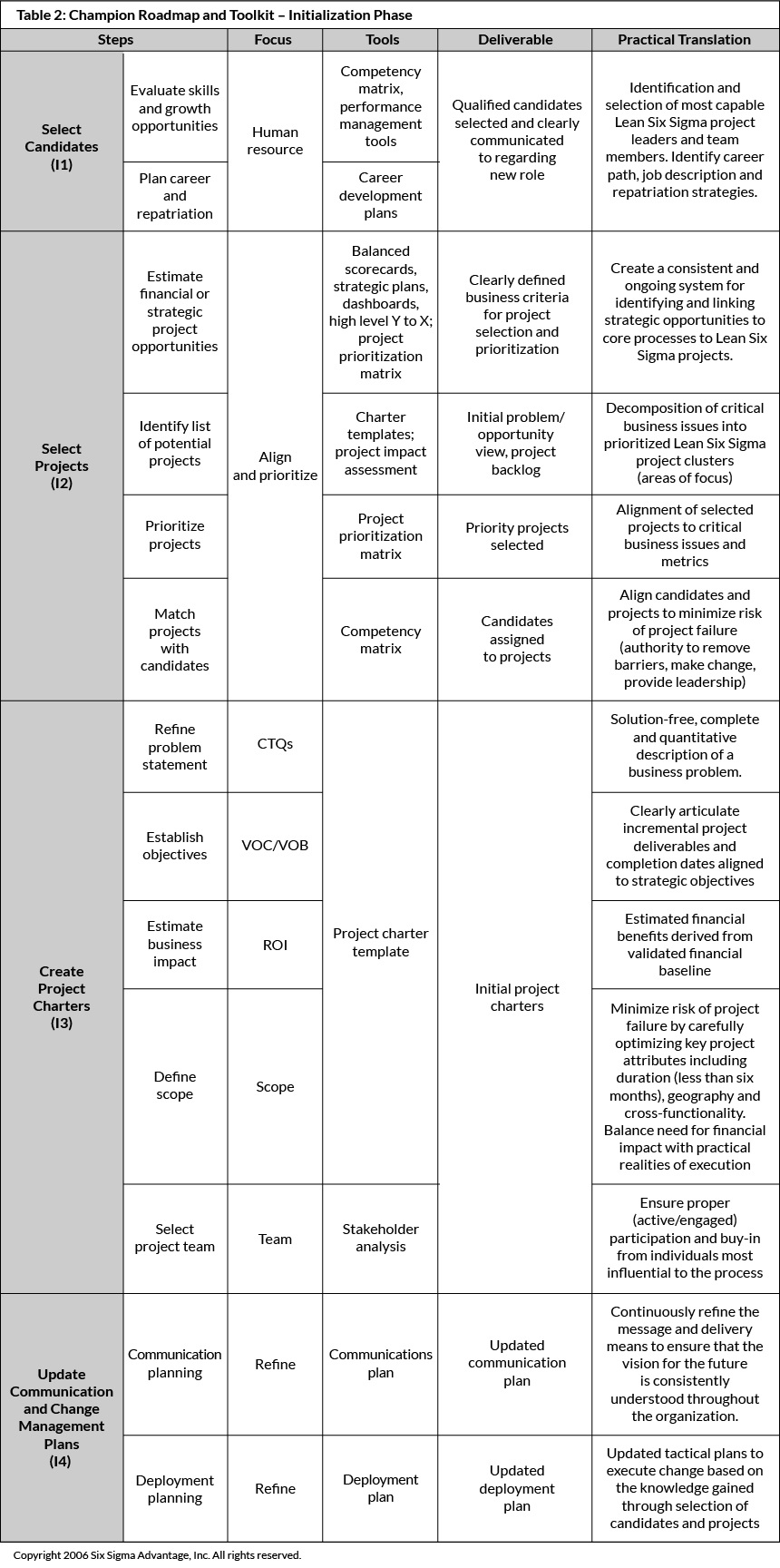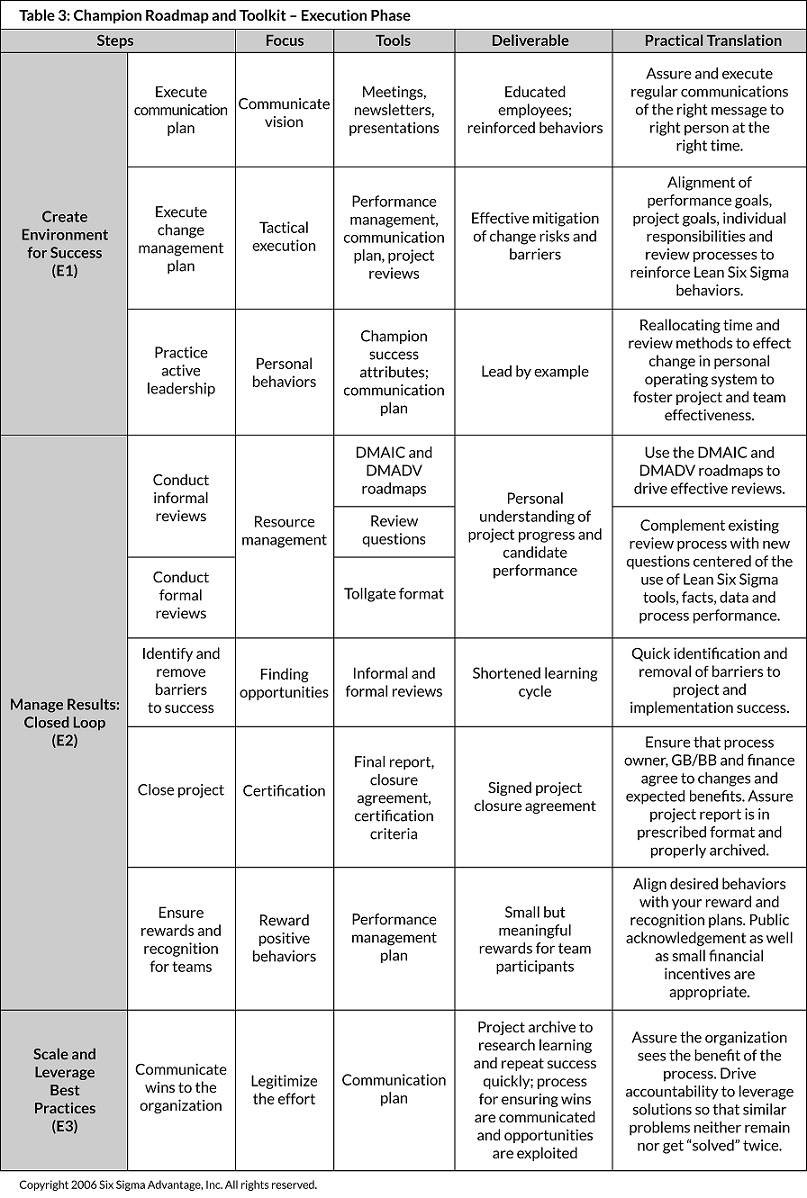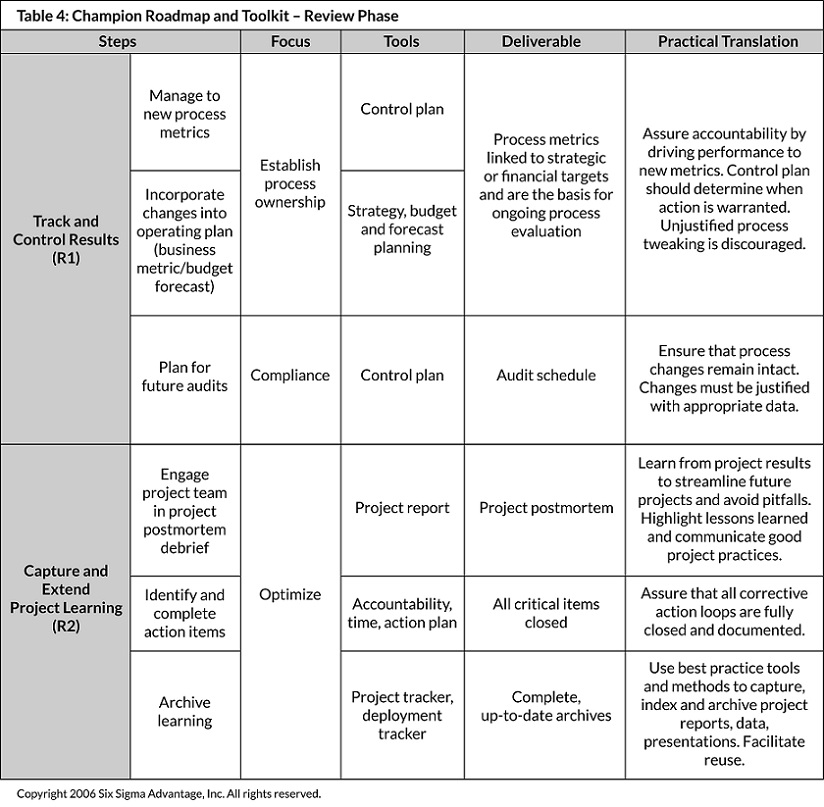
Most organizations have DMAIC and DFSS roadmaps to guide Black Belt and Green Belt projects. But what guides their Champions? Most Champions are busy people, often managers or executives with multiple and diverse responsibilities. In many cases, although not the optimum situation, Champions receive a meager one- or two-day overview in the Lean Six Sigma methodology and tools. They are then expected to “buy in”; change the way they view, manage and review projects; and then manage a group of people how have an entirely foreign skill set and approach to problem solving and design.
It is neither fair nor effective to expect these individuals to wade through a large training manual for the answers to their questions and guidance for their role. A solution to the problem can be found in a recently developed Champion roadmap. The use of this roadmap improves the probability that Champions will execute the correct steps in their role in a Lean Six Sigma deployment.
Although training a Champion in a Yellow Belt, Green Belt or even the Black Belt body of knowledge is a more preferred track, few organizations have the organizational bandwidth to execute in this fashion. Therefore, a concise method of summarizing Champion roles, specific steps and a rough order of execution is needed. Without such a guide, the Champions are left to their own devices to imagine what they are supposed to do and when to do it.
The format used for the Champion roadmap was developed several years ago for a roadmap to guide Belts through their DMAIC and DMADV projects. The basic conventions of that roadmap included:
- Thought Process – A description of activity or thought to be learned and documented.
- Individual Steps – Multiple steps to complete the thought or activity.
- Required Tools – Links or references to specific tools needed to do the job.
- Practical Translation – A practical simple language statement of what is to be accomplished or learned.
Adopting these conventions for use by Champions resulted in a refined four-page roadmap with links to key tools and resources. (The reproductions of the roadmap in this article do not have links.) It is designed for use in conjunction with the similarly designed DMAIC or DMADV roadmaps, especially when reviewing a Black Belt or Green Belt project.
Because the Champion’s role has to do with communicating, selecting people and projects, and ensuring effective execution and review of projects, the main Champion roadmap topics are:
- Orientation
- Initialization
- Execution
- Review
Each topic deals with a specific aspect of a Champion’s roles, responsibilities and required actions. As illustrated in Figure 1, most of the original conventions of the roadmap for Belts were used. However, the details of the thought process, individual steps, required tools and practical translations are fine tuned for Champions.
In the collective body of knowledge regarding Lean Six Sigma, critical success factors dictate that the Champion’s role is to first provide organizational orientation to their team regarding Lean Six Sigma use (Table 1). This involves activities that include acquiring basic education in Lean Six Sigma foundations (metrics, roadmaps, etc.), building and implementing an appropriate communication plan, and practicing the basics of change management. These items help to set a solid baseline for moving on to the Initialization phase.

Once in the Initialization phase (Table 2), thought processes and steps shift to the selection of Belt candidates, selection of projects, creation of project charters and updating the communications and change management plans. Tools include items such as competency matrices, performance management tools, balanced scorecards and stakeholder analysis.

After candidates are selected and aligned with projects of proper scope, the Champion’s focus shifts to the Execute phase (Table 3). In Execution, a Champion becomes involved the creation of an environment to ensure project success through regular communications, active involvement and leadership. Those functions manifest themselves in removing barriers to success, ensuring accountability and driving replication of successful results. Highlighted tools include DMAIC/DMADV roadmaps, review questions, performance management tools and communication plans.

In the Review phase (Table 4), the Champion is ensuring that transfer of control from the Belt to a process owner occurs. To do this effectively, process ownership must be clearly delineated, an executable control plan provided and an ongoing monitoring of key metrics and action items performed. It also is desirable for a Champion to ensure that project and process knowledge is captured and properly archived for reuse. Control plans, various project trackers, project reports and other operational tools are used in this phase.

When these roadmaps are coupled with the appropriate tools and training, a Champion can efficiently and effectively “Orient” themselves and their teams to the Lean Six Sigma approach, “Initialize” Lean Six Sigma projects and teams, “Execute” as best-in-class Champions and ensure project completion, success and replication through proper “Review.”
Note: The original format for the DMAIC/DMADV roadmaps and basis for the subsequent Champions roadmap was devised by David L. Hallowell. The Champions roadmap was the combined effort of Mr. Hallowell, Robert B. Tripp and the author.